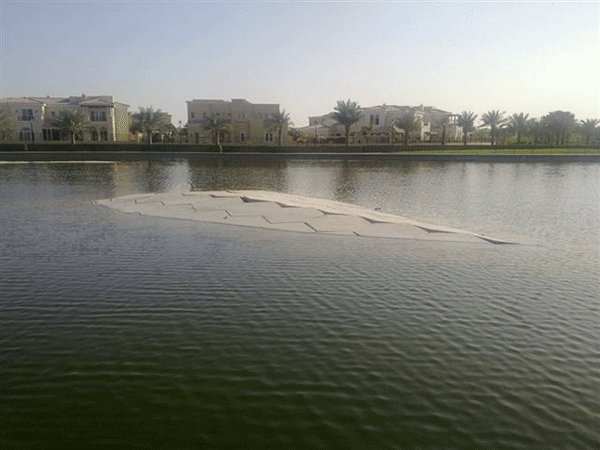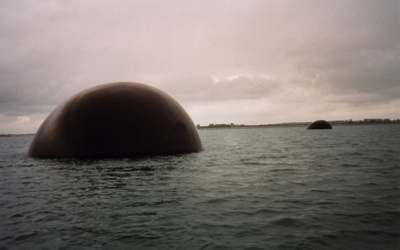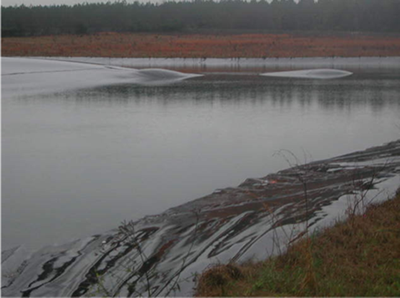When gas gets under a geomembrane, operations-impairing bubbles can form. A number of reasons may be responsible, such as installation damage, poor seaming, or a lack of appropriate construction quality assurance (CQA) measures like liner integrity surveys. These bubbles are commonly referred to as “whales,” and they can impact wastewater facilities, manure lagoons, ponds and other lined installations.
As this photo demonstrates, even 6 in. (150 mm) thick concrete slabs are insufficient ballast to prevent whales due to trapped air and rising groundwater under a geomembrane liner.
 |
We thank Samer Hasan (BMC-Gulf) for sharing the photo and for the conversation with Ian Peggs (I-CORP INTERNATIONAL) that connected us with the image.
We must stress that these anomolies are avoidable. Good design and specification, proper installation techniques, and appropriate CQA should prevent these unusual occurrances. But to help further illustrate the impact these whales can have, we have a few more photographs.
 |
 |
 |
Geosynthetica welcomes your images, project notes, and technical tips from the field. Contact editor Chris Kelsey at chris@geosynthetica.net.











